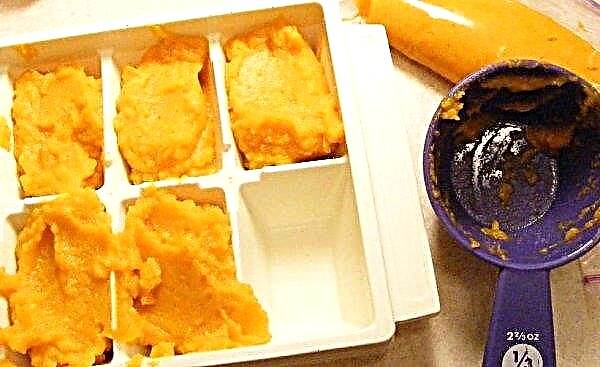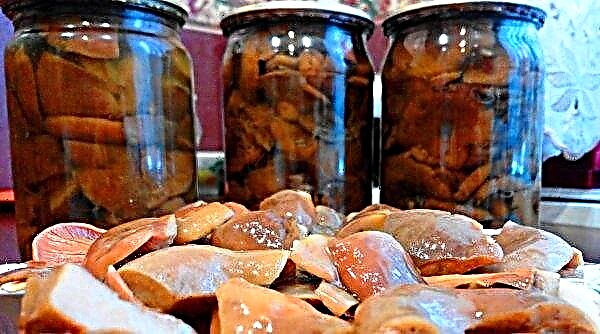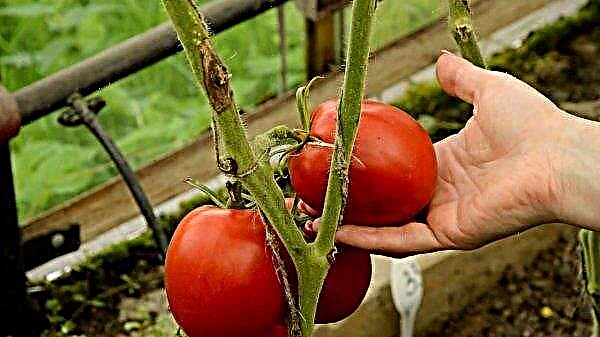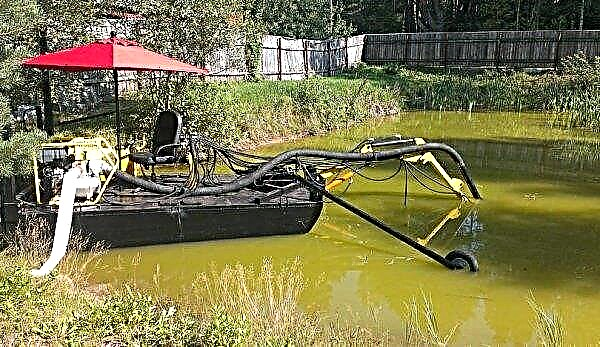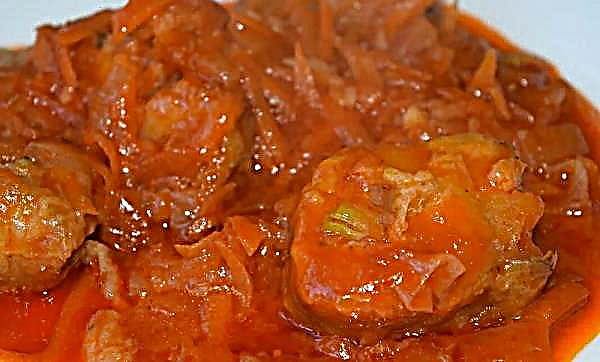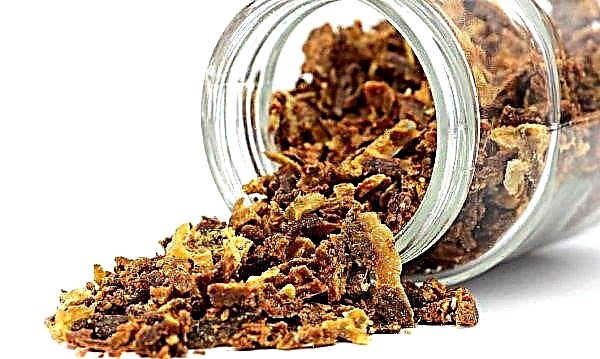For the successful cultivation of tomatoes, it is necessary to know the features of the selected variety in order to ensure the proper agricultural technology and care for a successful harvest. The earliest low-growing varieties are considered the easiest to cultivate, including the Tolstushka tomato.
Grade description
Undemanding and unpretentious bbw is suitable for growing both in open ground and in greenhouses and greenhouses. For gardeners, a special attraction is the ability to get an early harvest of large juicy tomatoes.
Botanical features
Distinctive features of the variety are as follows:
- medium early ripening with a growing season of up to 116 days;
- compact bush;
- determinant type up to 80 cm high;
- almost no need for herding;
- fruits are large, fleshy, weighing up to 250 g;
- the pulp is sweet, dense, with a high content of nutrients;
- possesses resistance to verticillosis and fusarium disease.
Did you know? In Spain, at the annual La Tomatina festival, a tomato battle takes place, during which participants in the amount of up to 40 thousand people throw tomatoes at each other. For fun, they bring dozens of tons of ripe fruit on several trucks and completely fill the city center with “tomato rivers” during the battle.
Grade Application
Excellent taste characteristics allow the wide use of fresh Tolstushka tomatoes for salads. The meaty flesh is ideal for making lecho, sauces, pastas and juices. Presentation and quality are well preserved during transportation over short distances.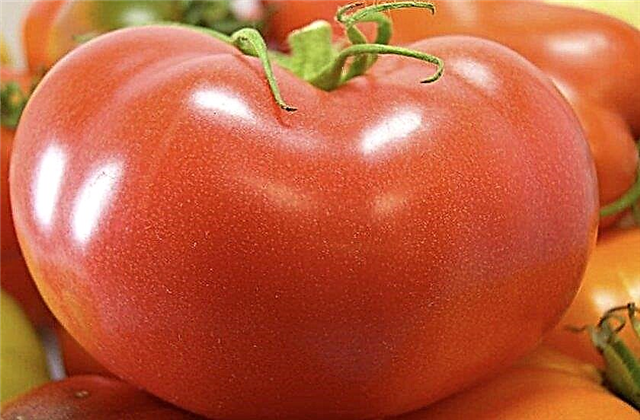
Advantages and disadvantages
- The advantages of the variety include:
- high productivity;
- large fruit size;
- good taste;
- the possibility of growing in greenhouses and open ground;
- disease resistance;
- lack of need for the formation of a bush.
- The disadvantages are:
- the impossibility of salting and preservation as a whole due to the large size of the fruit;
- because of the heavy weight, the clusters with fruits often fall to the ground.
Self-growing seedlings
Tomato is a heat-loving plant, therefore sowing seeds directly into the soil is possible only in a very warm climate, and in a temperate continental climate, the result is only a seedling method. Purchased seedlings do not always live up to expectations, because its quality is not known, and it does not take root well in a new place, and you can bring diseases with it to your garden.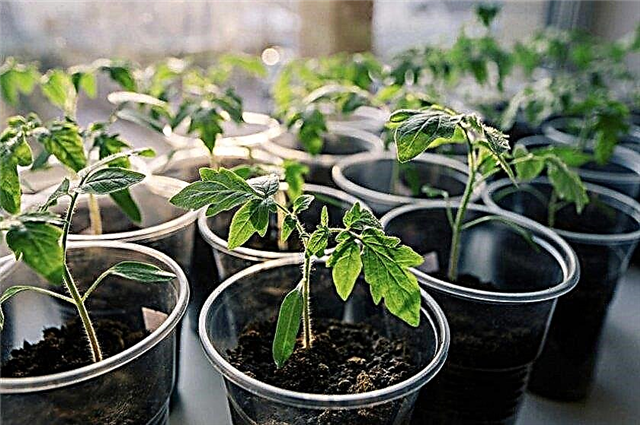 Self-grown bushes are much healthier and stronger, take root faster and will not be crammed with unnecessary “chemistry”. The volume and quality of the crop will depend on the health and vitality of the seedlings, therefore, their cultivation must be treated with patience and attention.
Self-grown bushes are much healthier and stronger, take root faster and will not be crammed with unnecessary “chemistry”. The volume and quality of the crop will depend on the health and vitality of the seedlings, therefore, their cultivation must be treated with patience and attention.
Sowing time
The best time to plant Bbw seeds for seedlings is late March or early April. In this case, by the time of planting in the ground, the trunks of the sprouts are sufficiently strong, and they themselves will be ready for flowering.
The soil
The soil for sowing can be purchased ready for tomatoes or prepared in advance yourself. To do this, peat or sawdust and turf ground are mixed in equal parts, adding humus for fertilizer.
Before use, the substrate must be disinfected to exclude the possibility of seedling diseases and pest attacks. The most common methods: calcine in the oven for 10-15 minutes at a temperature of +180 ... + 200 ° C or spill with a bright pink solution of potassium permanganate and allow to dry.Important! The most viable seedlings are obtained when grown in the "native" soil, prepared with the addition of garden soil from the site on which it is planned to plant tomatoes.
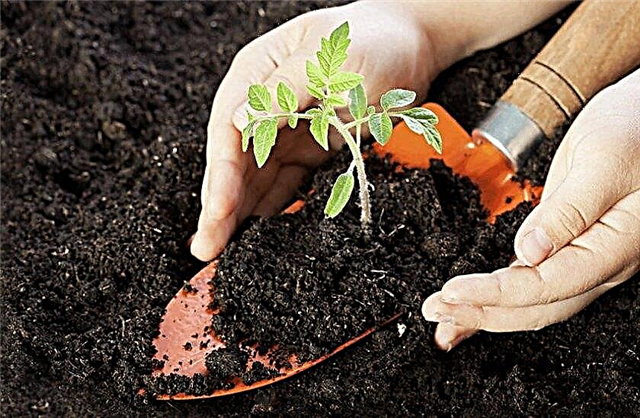
Capacity for growing
Containers for seedlings are disinfected in a strong solution of potassium permanganate. Any convenient shallow containers are suitable for planting: plastic cups or containers, cassettes, wooden drawers.
The use of peat tablets is the most expensive way to grow, but at the same time the easiest. The tablets are universal in use, disinfected, they contain all the necessary nutrients, growth stimulants and fungicides. The only danger may be that the delicate roots of the sprouts can be burned if misused.
Optimal and gentle for seedlings is growing in peat pots. The method is good in that sprouts are planted in a constant place directly in the pots, without injuring the root system.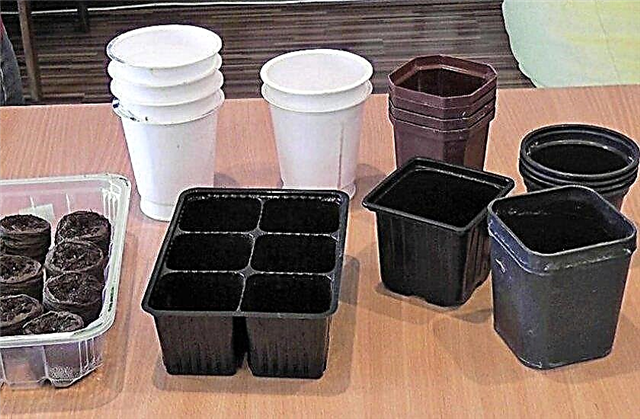
Seed preparation
Seed material of large producers does not need additional processing before sowing. The packaging should have the appropriate inscription, and the seeds themselves are painted in bright colors.
Self-collected seeds need some preparation. First, they are calibrated by immersion for 10 minutes in a saline solution (a teaspoon of table salt in a glass of water) to collect the most full-bodied ones that have sunk to the bottom. Then carry out disinfection in a 1% solution of potassium permanganate for 15-20 minutes. After each procedure, rinse with clean water.Did you know? If you sow seeds collected from hybrids (labeled F1), they will grow wild tomatoes dotted with small fruits with a bright taste and rich smell.
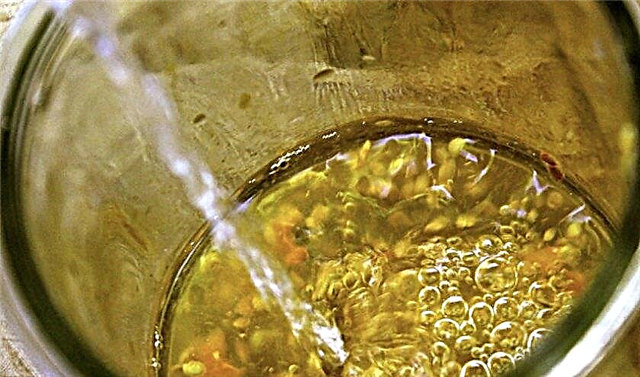 Additional soaking in growth stimulants is not carried out, because tomatoes have a high germination rate, but if the seeds have lain for more than 2-3 years, it is recommended to withstand them in a solution of "Epina", "Zircon" or others, according to the instructions. After that, the seeds are wrapped for 1-2 days in a moistened tissue, paper towel or cotton pads for germination. To prevent the material from drying out, it is periodically wetted with warm water from a spray bottle.
Additional soaking in growth stimulants is not carried out, because tomatoes have a high germination rate, but if the seeds have lain for more than 2-3 years, it is recommended to withstand them in a solution of "Epina", "Zircon" or others, according to the instructions. After that, the seeds are wrapped for 1-2 days in a moistened tissue, paper towel or cotton pads for germination. To prevent the material from drying out, it is periodically wetted with warm water from a spray bottle.Sowing seeds
As soon as the seeds are nacked, they sow. A centimeter layer of sand or expanded clay is laid in the prepared containers for drainage. It is covered with a prepared soil mixture of 4-5 cm, which is well moistened. Bbw seeds are laid out on the surface at a distance of 2 cm from each other with row spacings of 3-4 cm, 1 cm of the substrate is poured and moistened with warm water.
If the absence of picking is planned, sowing is carried out in individual pots or glasses. After sowing, the containers are covered with a film and kept at a temperature of +20 ... + 25 ° С.Important! Watering seedlings with cold water is unacceptable — this is the main cause of diseases and death of seedlings.
Seedling Care
After 3-5 days, when shoots appear, boxes with seedlings are transferred to a well-lit place. Using additional lighting provide daylight hours for 12-16 hours. Sprouts contain at air temperature at night +16 ... + 18 ° С and during the day +21 ... + 25 ° С, protecting from direct sunlight. Watering is performed as the surface of the substrate dries 1-2 times a week in the middle of the day with warm water by spraying. The film is removed several times a day for ventilation, and after 1-2 weeks completely removed. Seedlings growing in a common box after the appearance of 2-3 true leaves dive into separate pots. A few days later, when they take root and start to grow, they feed with the appropriate complex fertilizer. The concentration of the solution is made half as weak as indicated in the instructions. In the future, fed every 2-3 weeks, alternating mineral fertilizers with organic.
Seedlings growing in a common box after the appearance of 2-3 true leaves dive into separate pots. A few days later, when they take root and start to grow, they feed with the appropriate complex fertilizer. The concentration of the solution is made half as weak as indicated in the instructions. In the future, fed every 2-3 weeks, alternating mineral fertilizers with organic.
3 weeks before landing on the beds, the BBW seedlings begin to harden, taking them to a glassed-in balcony or veranda. The duration of hardening is increased gradually. Then the containers begin to take out to fresh air and 1-2 days before planting they leave on the street all night.
Planting seedlings in a permanent place
Young bushes. Fatties growing in peat cups or tablets are planted with them. When using plastic containers to facilitate the process of extracting the root coma 1-2 days before planting, watering is stopped. The substrate is well moistened just before being placed in the hole, then the lump will stay on the roots and will not crumble.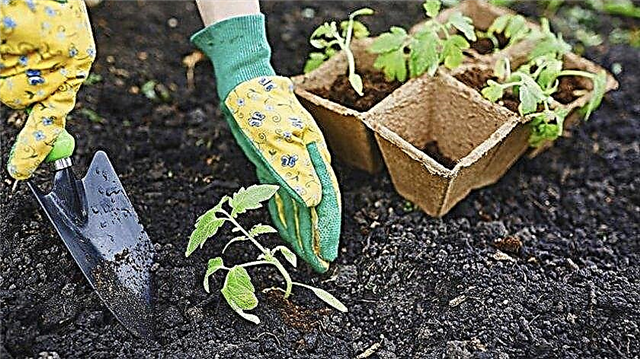
The timing
Seedlings are ready for planting, when it reaches a height of 25 cm, will have 5-7 leaves, the first flower brush and well-developed root system.
In May-June, depending on the region, when the earth warms up to + 15 ° C and the threat of frost passes, bushes are planted in open ground. When planting in a greenhouse, this period occurs 2-3 weeks earlier.Important! If the seedlings are overexposed in pots and allowed to bloom, they will stop growing and then they will not recover in the beds even with good care and will not give a full-fledged crop.
Site selection
For a tomato bed, they choose the warmest and sunniest place on the south side of the house or building. On the north side of the planting, it is desirable to enclose tall plants, for example, sunflower. Be sure to take into account what culture grew at this place last season. Suitable precursors for tomatoes are zucchini, cucumbers, onions, parsley or carrots. Do not re-grow tomatoes in the same place after potatoes or other solanaceous, as they are affected by common diseases and pests.
The soil for the beds begins to prepare in the fall. The site is dug up, introducing organic top dressing - compost, manure or bird droppings. In the spring, additional loosening is carried out, weeds are harvested and 20-30 g of nitrogen and 10-15 g of potash fertilizers are added before planting on 1 m².
Landing pattern
Landing is preferably carried out in cloudy, calm weather. Seedlings of the Fat Woman are planted according to the scheme of 50x40 cm, having 7-8 plants per 1 m². If you place the bushes in a checkerboard pattern, they will receive more sunlight.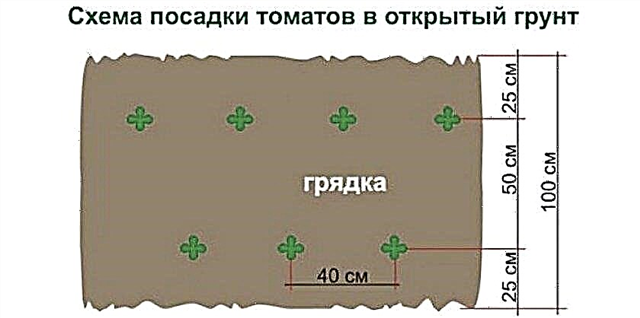 Wells are well shed with water and added to each handful of humus. Having established the root ball at the same level as before, cover it with earth, mixing it with humus and gently squeezing in a circle. Then again abundantly watered and mulch the soil surface with peat.
Wells are well shed with water and added to each handful of humus. Having established the root ball at the same level as before, cover it with earth, mixing it with humus and gently squeezing in a circle. Then again abundantly watered and mulch the soil surface with peat.
Features of outdoor cultivation
The first 10–12 days after planting, the Bbw bushes need rest for adaptation. They do not water, do not fertilize and do not loosen the soil, they protect from direct rays of the sun and strong wind. In the future, they provide the usual care for low-growing varieties.
Watering
In the first weeks, until the roots have grown enough to get to the moist deep layers of the soil, the sprouts are watered abundantly, up to 5 liters for each plant. The water used is collected rain or tap water, settled and warmed up to about the same temperature as the soil. 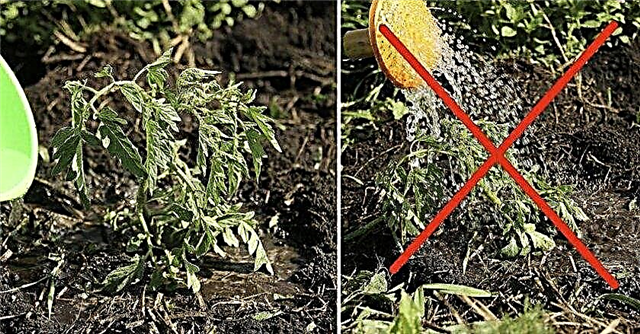 Plants are watered under the root so as not to splatter the leaves. In the future, watering is reduced to 3 liters 1-2 times a week, spending it whenever possible in the evening, when there is no direct sunlight.
Plants are watered under the root so as not to splatter the leaves. In the future, watering is reduced to 3 liters 1-2 times a week, spending it whenever possible in the evening, when there is no direct sunlight.
Important! If tomato bushes are poured excessively when they do not need it, the fruits crack and grow watery, tasteless, with a low content of sugar and nutrients.
Top dressing
Fertilizers are applied three times a season after heavy watering, alternating organic with mineral. You can use such mixtures:
- superphosphate - 20 g, water - 10 l;
- nitrophoska - 20 g, potassium humate - 20 g, water - 10 l;
- nitrophoska - 20 g, liquid mullein - 1 l, water - 10 l;
- superphosphate - 20 g, potassium sulfate - 10 g, chicken droppings - 0.5 l, water - 10 l.
Video: Topping Tomatoes
Stepson
The undersized bbw does not need to be shaped. Only stepchildren that begin to grow inside the bush and thicken the plant are removed. The stepson is also removed if it appears on the lower part of the stem, which threatens the plant to lose its strength and useful substances for growing fruits.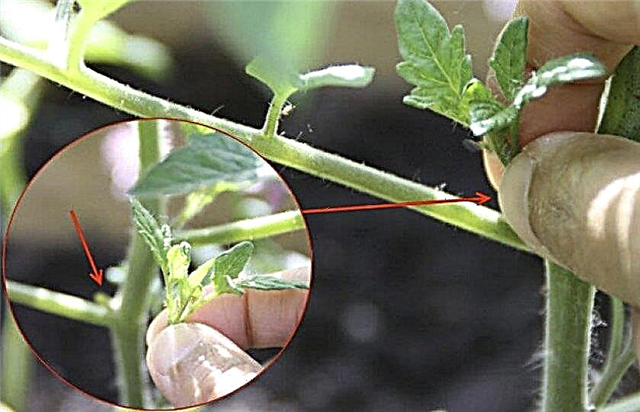
The procedure is carried out when the shoots have reached 4 cm in length, breaking off the apex and leaving a stump of 3 cm so that a new stepson does not start to grow from this sinus. If scissors are used, the blades must be dipped into the potassium permanganate solution after each cut so as not to introduce the infection into the wound. Stepsoning is done in the morning in dry weather, then the slices will dry well throughout the day. On this day, tomatoes do not water, do not fertilize and do not spray.
Soil care
The beds need to be regularly loosened and weed weed. After watering, the soil is mulched with peat, compost or dry grass, if there are no flowers or seeds on it. Mulching maintains moisture and looseness of the soil for a long time and delays the growth of weeds. If during the period of growing green mass on the lower part of the stem white dots of additional roots appear, the bushes need to be earthed.
Did you know? In 2001, the European Union decided to call tomatoes fruit.
Tying bushes
Compact, low bushes. BBW do not require tying. But heavy clusters with large fruits often fall to the ground and can "catch" the infection. This can be avoided by mulching the soil around the stem with a layer of at least 5 cm. Sometimes the method of growing a culture on a grid is used. It consists in the fact that over the seedlings they pull a coarse mesh, which is attached to the supports. The stems germinate freely through the cells, and the fruits gradually grow on the net as they grow and ripen without touching the ground.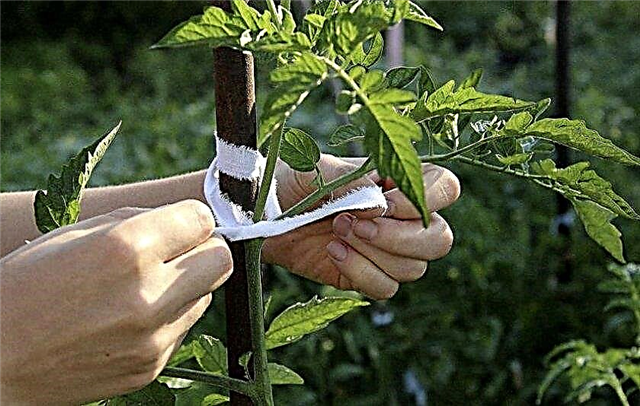
Preventative treatment
The variety has good resistance to disease. Subject to proper agricultural practices, the risk of injury is minimized. For preventive purposes, it is possible to treat plantings with Fitosporin 1-2 times a month. In some cases, varieties with vertex rot were noted. To combat the disease, dolomite flour is applied to the soil or plants are sprayed with Bordeaux fluid. Experienced gardeners recommend removing one bottom sheet from the bushes once a week to prevent infection. In order to protect against pest attacks, regular leaf treatment with fine dry wood ash is carried out.
Unpretentious tomato care Tolbushka, giving a rich harvest of great-tasting great fruits, is perfect as an early variety for any farm.



